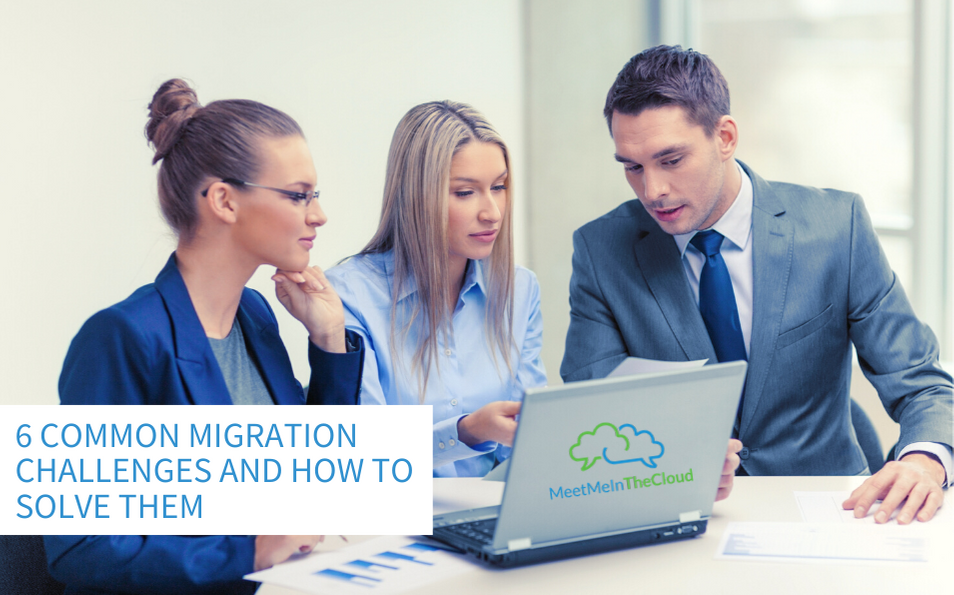Many companies that pursue a technology migration on their own in an effort to save money deal with a host of challenges. They don’t take the time or complete the planning and training they need for a successful migration. Save your leadership team (and employees) the headache with these tips.
Skill Gaps
Whenever you roll out new tech in your organization, there are bound to be skill gaps in your workforce. IT staff and end-users and accustomed to the legacy solution, which likely works and looks very different from the new solution you’re in the process of migrating to. This is normal, but that doesn’t mean you can roll out new solutions and just wait for your employees to figure it out. That costs time, which costs your company money.
To fill these skill gaps, you need training. Training and education efforts not only save you time implementing the new solution, but it also provides your employees with the confidence to use the solution and in their work overall. Not only does training help ensure that you receive a high ROI, but it also benefits your workforce on an individual level.
No Roadmap
A roadmap is a high-level visual plan that lays out your migration strategy. Without it, your team won’t be able to make sound strategic decisions concerning the migration. Or, worse, they will migrate your solution without a strategy in mind. This can lead to an ineffective migration.
Another problem companies face when migrating a solution without a roadmap is that there are no timelines. If there are timelines, they are inaccurate and the migration falls behind, which can potentially cause more problems later on.
To resolve this issue, it’s important to develop a roadmap at the beginning of the migration process, before any data has been moved. Then make sure the team fulfilling the migration is following the roadmap.
Deadlines and details can change, but a high-level, strategy-focused roadmap is key to a successful migration.
Reduced Productivity
During the migration, your workforce will likely be using two solutions, the old and the new. This means that with every update to one document, file, channel, etc., it needs to be updated on both solutions to keep everyone in the loop. This duplication process is time-consuming and the redundancy can be confusing for users, but it may be necessary.
It’s also important to note that if your team fulfills the migration in-house, those employees will have double the responsibility and the same amount of time and energy, which means their other tasks will be sidelined during the migration.
To limit the impact on your workforce’s productivity during the migration, shorten the migration time. One way to do this is to hire a migration expert, like from Meet Me In The Cloud, to manage the process.
Another way to reduce the impact on your workforce’s productivity is to complete the migration while your workforce isn’t working. For example, over a weekend or holiday break. Smaller migrations can often be completed during these timeframes, though it does require the employees performing the migration to work on the weekend or holiday.
Data Loss and Corruption
When duplicate solutions are running simultaneously during the migration process, there is a greater risk for data loss and corruption. The longer the migration process takes, the greater the risk. If data is corrupted or lost during the migration, it makes it harder to restore that data.
To avoid data loss and corruption during migration, you will need to backup all data. You will also need to determine the best way to store the data before the migration and have a plan for migrating the data in phases. Following a solid plan can reduce data loss and corruption.
Noncompliance
Each solution has its own properties and benefits, but not all solutions prioritize compliance. Without reviewing what each vendor provides in terms of compliance, you can potentially violate compliance requirements.
If compliance is important to your business, then you need to review each solution to ensure the one you choose meets regulatory compliance requirements. This means asking vendors how data is stored and accessed, how end-users are supported, if the vendor logs all end-user activities, and more.
Misaligned Goals
Often, business leaders want to replicate legacy systems in the new solution, but this defeats the purpose of the migration. No two systems work the same, so this sets up the entire migration for failure. Misaligned goals combined with unmet expectations turn the entire migration into a washout, leaving everyone frustrated.
To avoid this challenge, it’s important to have a discovery process before migrating. During this process, your leadership team needs to evaluate the old system for what is and isn’t working, and what other capabilities your business needs now or in the future. From there, your migration team or partner can design a plan to align the strategy with your leadership’s goals.
Learn more about our Migration Services at this link.

